Rabbits make great domestic pets and can generally live 8 to 12 months, depending on their breed and the environment. Rabbits are social animals and require comfortable housing, ample space for exercising and peers for socialization, so if you are planning to buy a rabbit, always have 2 or 3 of them. Rabbits are herbivores, and their diet mainly consists of grass, fresh green vegetables, weeds, plants, bushes, and barks from the trees.
Rabbits love to show affection to you in myriad ways, such as sitting beside you, licking your hands and face, and climbing on your back. They require a lot of care and attention to live a happy and healthy life, as they are vulnerable to life-threatening diseases, such as gastric Stasis, calicivirus, myxomatosis, dental problems, mite infestations, and respiratory infections.
Gastric Stasis or Gastrointestinal Stasis Syndrome is one of the most common diseases seen in pet rabbits and usually results from a low fiber and high-starch diet. You can easily look after a sick rabbit suffering from GI stasis at home; however, you need to consult a vet and maintain proper hygiene practices to avoid its transmission to other family members.
Are you planning to own a rabbit? Is your rabbit suffering from Gastric Stasis, and you are worried about whether he will survive it or not? In this article, we have compiled all the needed information about GI stasis, its symptoms and causes and how you can look after your sick rabbit at home.
Common diseases in rabbits
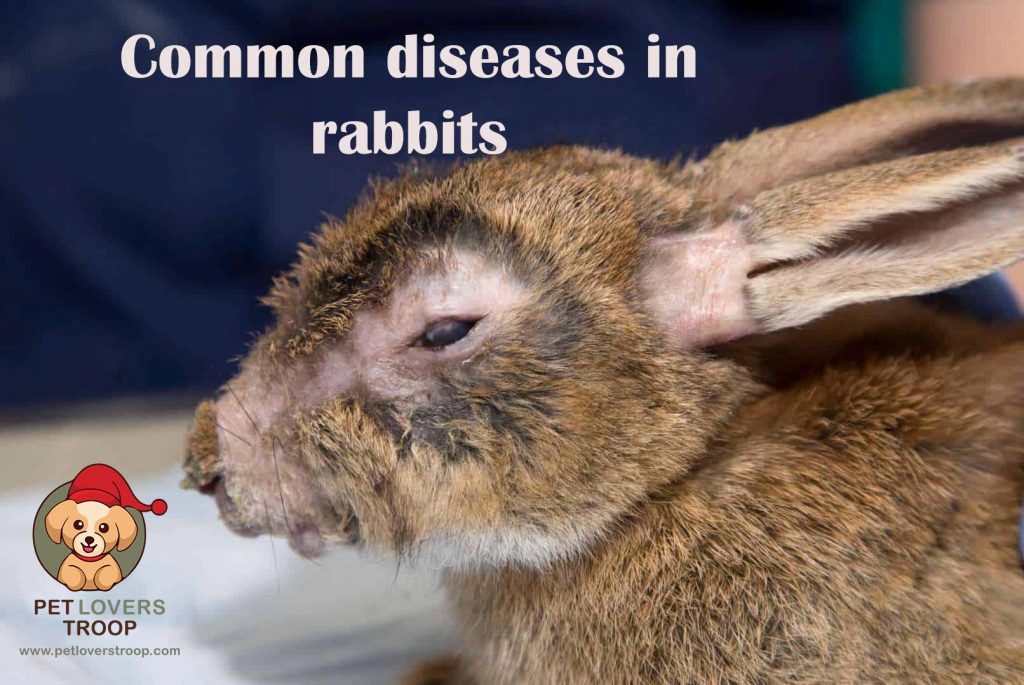
Rabbits are vulnerable to deadly and life-threatening diseases, some of which may include:
- Dental problems– overgrown or misalignment of teeth
- Gastrointestinal Stasis– affects fecal production
- Myxomatosis– a deadly virus resulting from the biting of fleas or flies
- Rabbit Viral Haemorrhagic Disease– a deadly disease that attacks internal organs
- Head tilt– results due to trauma, parasites, or bacterial infection in the ear
- Ear mites– a parasitic problem also known as ear canker
- Flystrike– results due to flies that lay eggs on rabbit’s skin, causing skin diseases/infections
- Diarrhea- causes loose stools, leading to dehydration
- Upper respiratory infections– results in a nasal obstruction, pasteurellosis can be a common cause of it
- E. cuniculi– affects the nervous system
- Pasteurellosis– affects reproductive organs, eyes, ears, and respiratory tract
Diseases that rabbits can transmit to humans
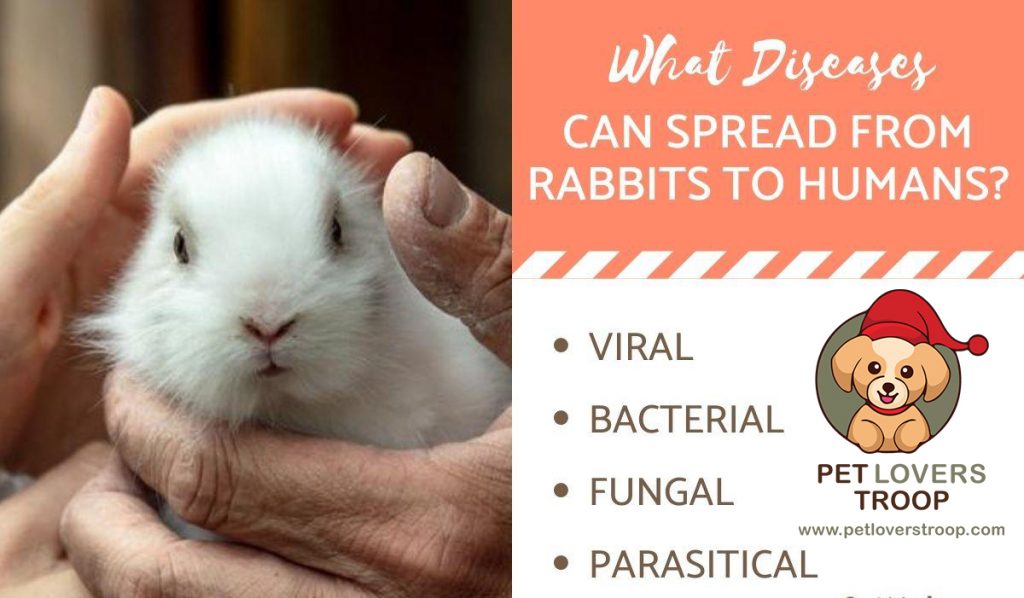
Rabbits are usually safe to interact with and handle; however, they can carry certain diseases to humans, which include:
- Tularemia– a bacterial infection transmitted through contact and causes chills, fever, and skin-related ulcers
- Pasteurellosis– a bacterial infection transmitted through scratch and bite and causes swelling, pus at the site of bite/scratch, and redness
- Ringworm– a fungal infection transmitted through contact and causes redness, itchiness, and flaky skin
- Salmonella– a bacterial infection that is transmitted through contact and feces and causes fever, abdominal pain or cramps, and diarrhea
If you are around a sick rabbit, it is advised to maintain good hygiene practices such as washing hands regularly, cleaning the living space such as the lounge or bedroom thoroughly, and avoiding touching the rabbit’s urine or feces. If you suspect contamination or infection, contact a doctor immediately and seek medical advice without any delay.
What is Gastric Stasis?
Gastric Stasis is a medical condition in which the stomach takes longer to empty the ingested content into the small intestine. It is caused due to a variety of reasons or factors, such as diabetes, nerve damage, abdominal surgery, medication side effects, infection from a virus, scleroderma, and certain types of autoimmune diseases. Some common symptoms include bloating, vomiting, nausea, abdominal pain, and weight loss.
Read More: Beginners guide to choosing the right birdcage
GI stasis significantly impacts a person’s overall quality of life and health, and can result in dehydration, malnutrition, and other life-threatening severe complications. GI stasis is treatable and can be cured depending on the underlying causes and symptoms. Depending on the severity, treatment options can include medications and dietary changes.
Gastric Stasis in rabbits
Gastric Stasis is a common, life-threatening disease in rabbits that occurs when the rabbit’s digestive system stops altogether or slows down. It builds up fluids and gases in the intestine and stomach, leading to pain, discomfort, loss of appetite, and bloating. Some common factors or causes of GI stasis in rabbits include dehydration, stress, lack of fiber in the diet, high starch foods, dental issues, lack of exercise, and pain from underlying issues like gas or urinary tract infection.
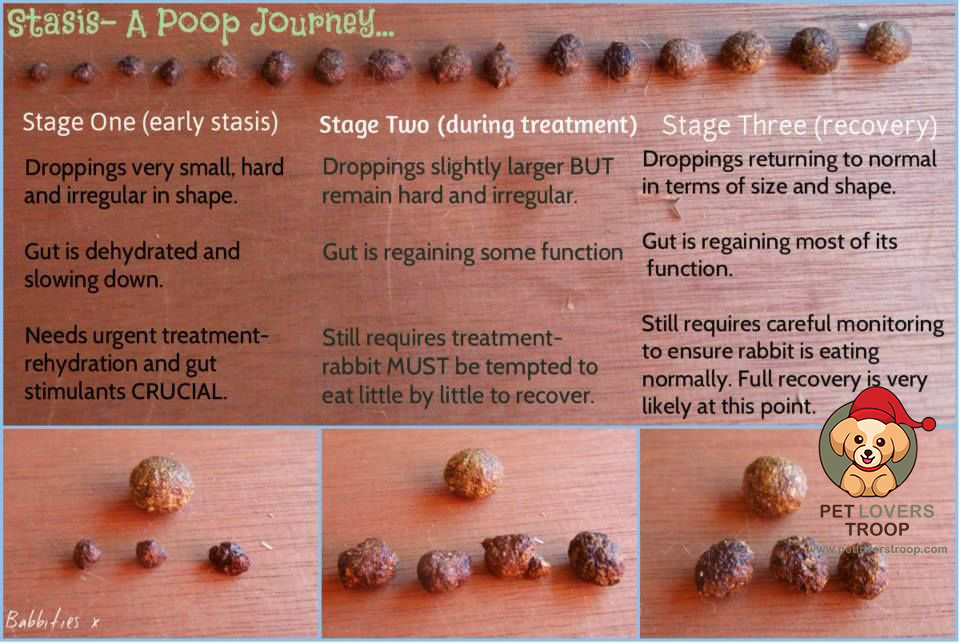
If left unchecked or untreated, GI stasis can be lethal for the rabbit. You can treat your sick rabbit at home by making dietary changes, administering medications, and providing supportive care to ensure a safe and comfortable environment.
Read More: Best Dog workouts: Fun daily exercises for your pup to keep them hale and hearty
Being a rabbit owner, be diligent in detecting some early signs of GI stasis, including lethargy, loss of appetite, and little or no stool. If you are facing any of these problems, seek veterinary attention immediately.
Gastric stasis symptoms in rabbits
Gastrointestinal Stasis can cause several symptoms in rabbits which may include:
- Reduced or loss of appetite
- Appear lethargic, sluggish, or inactive
- Little or no stool production- rabbit may produce smaller or malformed fecal pellets
- Signs of discomfort due to abdominal pain, such as hunching or teeth grinding
- Bloating- belly may appear swollen than usual
- Dehydration due to excessive loss of fluids or less water intake
- Behavioral changes- less movement, reluctance, and aggression
What causes GI stasis in rabbits?
One of the most common factors that cause GI stasis in rabbits is a diet that is too high in carbohydrates and fats and too low in fiber. Rabbits usually eat grass and greens that contain fiber. However, commercially available rabbit pellets have higher amounts of carbohydrates than fiber. Also, seeds and nuts contain large amounts of fat deposits, so eating large quantities of these foods can lead to slower GI tract motility.
When your rabbits consume less food than required, the normal functions of the GI tract slow down, causing the food within the stomach and cecum to sit longer in the tract. It eventually leads to extracting more water from the tract to compensate for the less fluid intake, leaving behind a bulk of dried food and hair within the tract, also known as a hairball. This dry material amasses the stomach and cecum, making the rabbit bloated.
Read More: GI Stasis in Rabbits: A Deadly Condition
Besides, it also changes the pH levels of the GI, disrupting the normal bacteria and resulting in the build-up of painful gas in the tract and eventually decreasing the overall appetite of the rabbit. Also, stressful environments and painful dental problems or infections such as overgrown teeth can lead to GI Stasis in rabbits. Insufficient water intake also slows down their digestive system, leading to little or no stool production. Research indicates that obese rabbits are more prone to developing Gastric Stasis than petite rabbits.
Certain medications or antibiotics can also disrupt the digestive system. Similarly, lack of exercise and movement can make your rabbit obese, making them more vulnerable to GI stasis.
Is Gastric Stasis lethal for rabbits?
GI stasis is a life-threatening disease and can be lethal for your rabbit if left unchecked or untreated. It usually starts due to the build-up of gases which may cause loss of appetite or discomfort. However, if left unchecked, they can lead to dehydration, gut stasis, and even death. Excessive loss of fluids or low water intake can lead to organ failure and shock, so ensure your rabbit is not dehydrated.
Read More: Dirty fish tank: How to maintain your fish tank’s hygiene and health? March 2023
Bear in mind, that gastric Stasis requires medical attention, so it is advised to take your rabbit to a vet as soon as you notice some early signs. After a proper diagnosis, your vet will suggest proper medication, treatment, and a dietary/exercise chart to prevent further complications.
Is Gastric Stasis treatable?
Yes, GI Stasis in rabbits is treatable, but as mentioned earlier, it requires proper medical attention and management. Your vet may prescribe a gut motility medicine to stimulate digestion or a pain reliever to deal with discomfort. They may recommend dietary changes, dental care suggestions, fluid therapy, and, in some severe cases, hospitalization to provide supportive care to stabilize your rabbit’s deteriorating condition.
Treatment of GI Stasis by Veterinarian

When you take your rabbit to the vet, they will first try to determine the cause behind the slowdown of fecal production. If there is an underlying condition, they will treat that first. Later, different x-rays and blood tests will be run to check if the presence of gas in the stomach is due to a blockage or an organ malfunction. Depending on the test, the vet will prescribe treatment or medication to stimulate motility in the gut. Following are some possible treatments to treat your sick rabbit:
- Motility drugs such as cisapride
- Pain relieving medications such as butorphanol to treat discomfort at the hands of gas. However, be careful with the intake as the excess amount can lead to gastric rupture or organ failure
- Antibiotics to prevent the growth of harmful bacteria
- IV fluids can help in softening the stored mass in the intestines
- Syringe feeding to ensure daily intake of required nutrients and fibers
- Surgical intervention such as gastric decompression is performed by sedating the rabbit. Some sick rabbits can amass large amounts of food and hair, which can lead to blockage of tubes
- Exercise routine and dietary therapy, which may include large amounts of fresh greens such as lettuce, spinach, grass hay, and parsley
How to look after a rabbit with Gastrointestinal Stasis at home?
Caring for a sick rabbit suffering from Gastrointestinal (GI) can be challenging, as they need a warm and comfortable environment for a speedy recovery. Here are some tips that can help you look after your sick rabbit at home:
Feed them with syringe
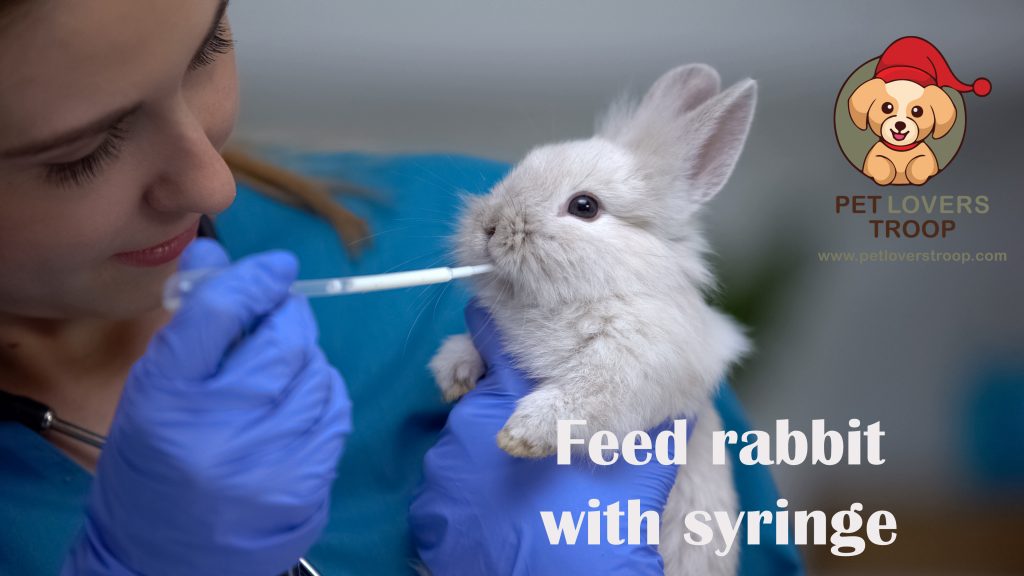
After returning home, your vet may advise you to feed your rabbit with a syringe until their fecal production becomes normal. They may ask you to administer GI pro-motility medications that can aid in improving their appetite and digestive health.
Reduce intake of carbohydrates
The vet may ask you to reduce or eliminate carbohydrates and fats from your rabbit’s diet. Ensure that you keep them away from pellets and nuts high in carbohydrates and fat, as they can deteriorate their condition.
Offer a diet that is rich in fiber
Ensure that your rabbit consumes various fresh vegetables and hay to stimulate motility. You can also offer them water-rich fruits and vegetables to keep them hydrated. Offer them small amounts of food throughout the day, rather than giving them large quantities in one go.
Make sure they move and exercise
Lack of movement and exercise is one of the major causes of GI stasis. Provide your rabbit with a safe and open space to move around. It will help stimulate their digestive system and will keep them active.
A good massage can make them happy
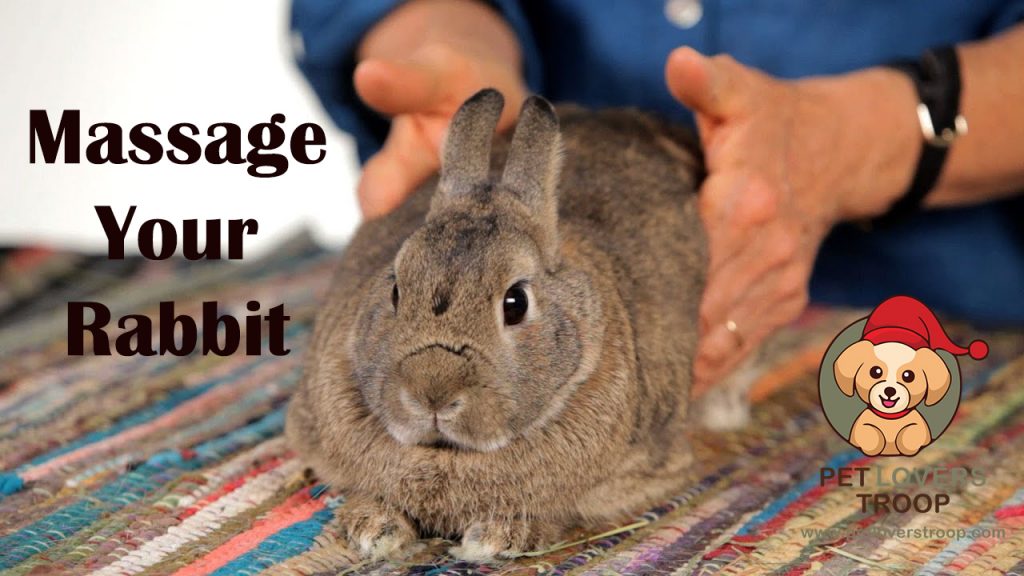
Massage their belly in circular motions, as it can help stimulate digestion and prevent the build-up of gases. Start from the base of the ribs and slowly move towards the hips. Use gentle hands.
Heat therapy to cure Gastric Stasis
You can also put a warm water bottle or heating pad on their belly to relax their body muscles.
Probiotics for beneficial bacteria
Provide your rabbits with probiotics to help build up beneficial bacteria vital for their gut health. You can use these on the recommendation of your vet.
Monitor their progress
Keep a check on the progress of your rabbit. Monitor their behavior, stool, and appetite and note if the symptoms improve or worsen with time. Inform your vet to make any changes in the medication or treatment




